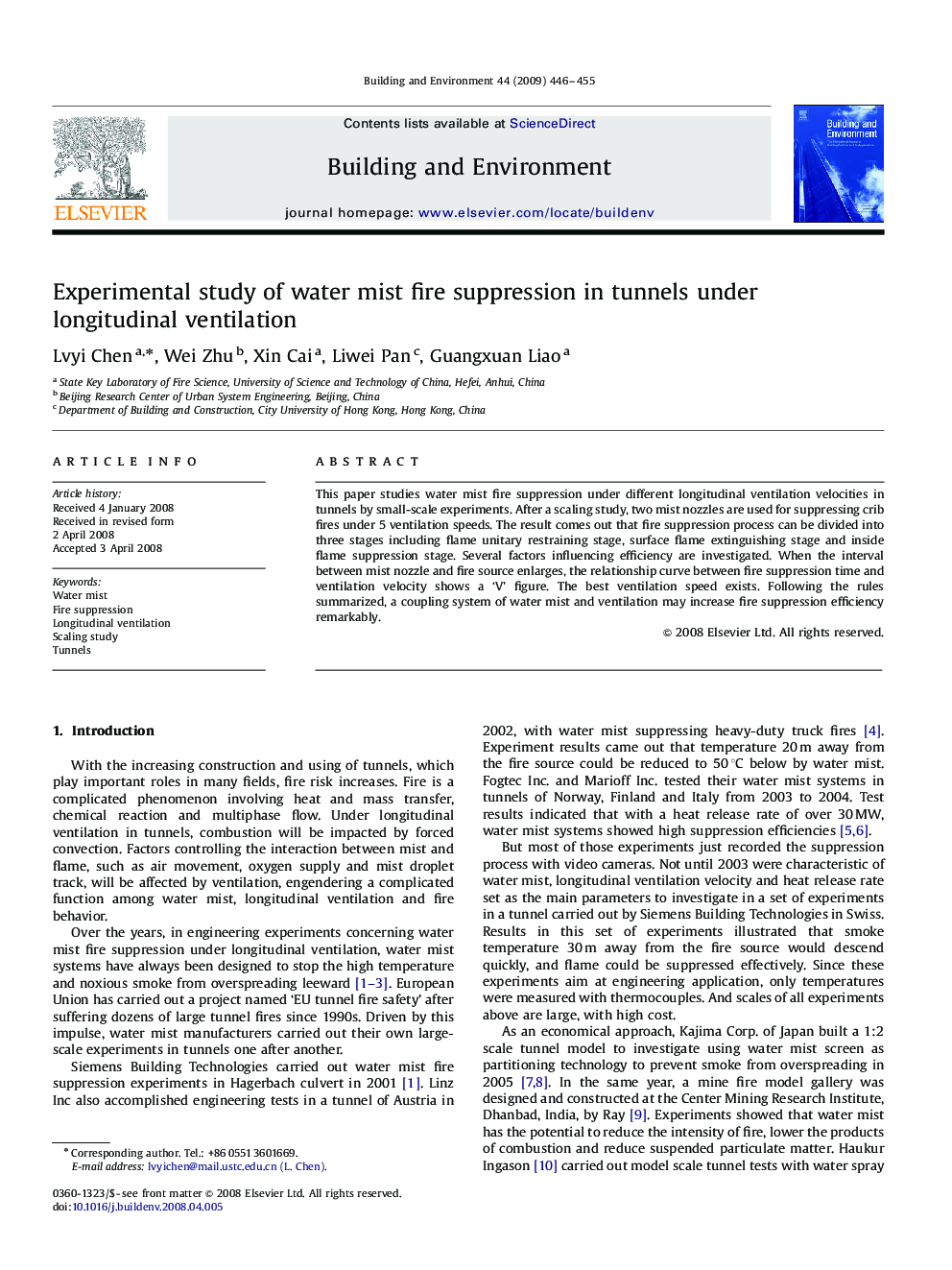| Article ID | Journal | Published Year | Pages | File Type |
|---|---|---|---|---|
| 249602 | Building and Environment | 2009 | 10 Pages |
This paper studies water mist fire suppression under different longitudinal ventilation velocities in tunnels by small-scale experiments. After a scaling study, two mist nozzles are used for suppressing crib fires under 5 ventilation speeds. The result comes out that fire suppression process can be divided into three stages including flame unitary restraining stage, surface flame extinguishing stage and inside flame suppression stage. Several factors influencing efficiency are investigated. When the interval between mist nozzle and fire source enlarges, the relationship curve between fire suppression time and ventilation velocity shows a ‘V’ figure. The best ventilation speed exists. Following the rules summarized, a coupling system of water mist and ventilation may increase fire suppression efficiency remarkably.
